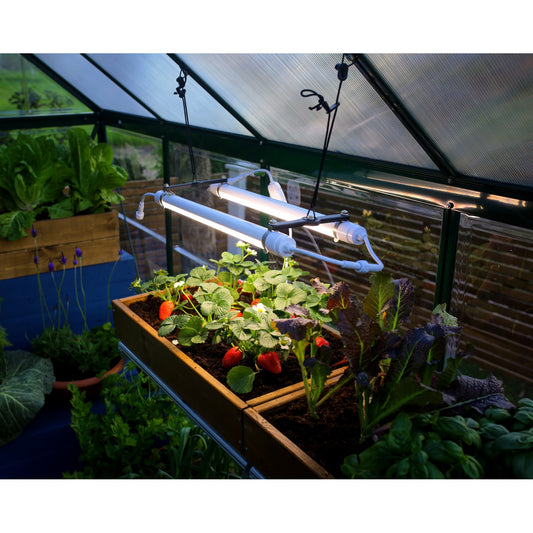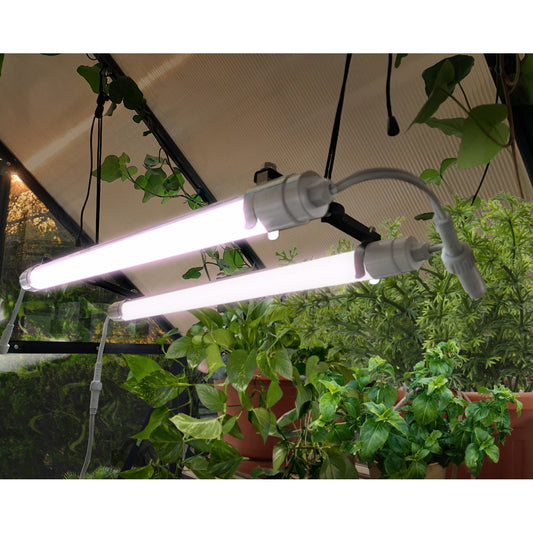Collection: Grow Lights for your Greenhouse

Grow lights make indoor gardening simple. Natural light changes with the season and with your windows. LED grow lights fill the gap, delivering consistent, plant-ready light so seedlings stay compact, greens stay crisp, and flowering plants set buds on schedule.
Modern LEDs use less energy and produce less heat, which protects tender foliage and keeps your room comfortable. A wide, even beam reduces hotspots and shadows, so your whole shelf or tent grows at the same pace. Many fixtures offer dimming and spectrum control. Use cooler, blue-leaning light for strong starts. Use balanced white for everyday growth. Add more red when you want bigger blooms and fruit.
Results you’ll notice fast. Start seeds weeks earlier. Harvest microgreens on repeat. Keep basil, mint, and lettuce thriving on the counter. Save low-light corners by giving monsteras and fiddle leaf figs the light they’re missing. Supplement a greenhouse on cloudy days to steady production in winter.
Pick the format that fits your space, from slim bars for racks to panels for tents and larger houseplant displays. Add a simple outlet timer to automate your schedule. With the right LED grow light, you get predictable results, faster growth, and fresher harvests, all indoors.
Grow Light FAQ
Do LED grow lights work for all indoor plants?
How many hours per day should I run them?
How high should I hang the light?
Which spectrum is best?
Will it raise my power bill a lot?

-

 Vendor:Palram - Canopia
Vendor:Palram - CanopiaPalram - Canopia | Brighton - LED Grow Light
- Regular price
- $164.99
- Regular price
- $164.99
- Sale price
- $164.99
- Unit price
- / per



